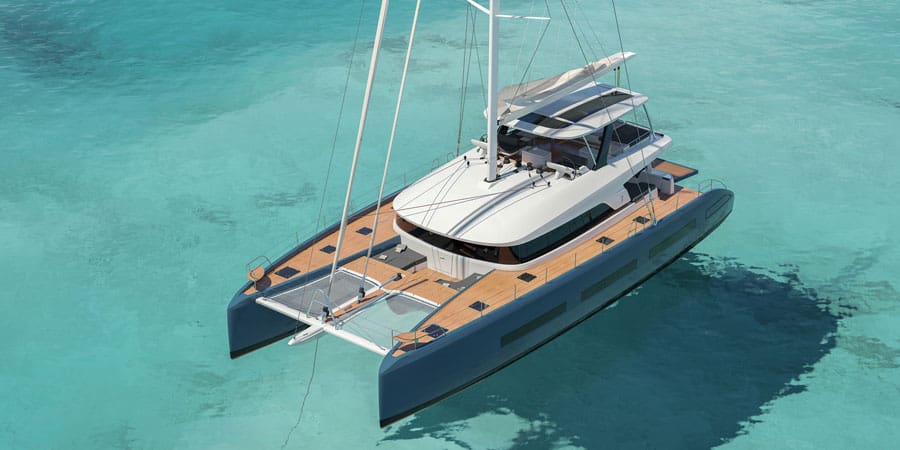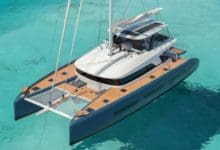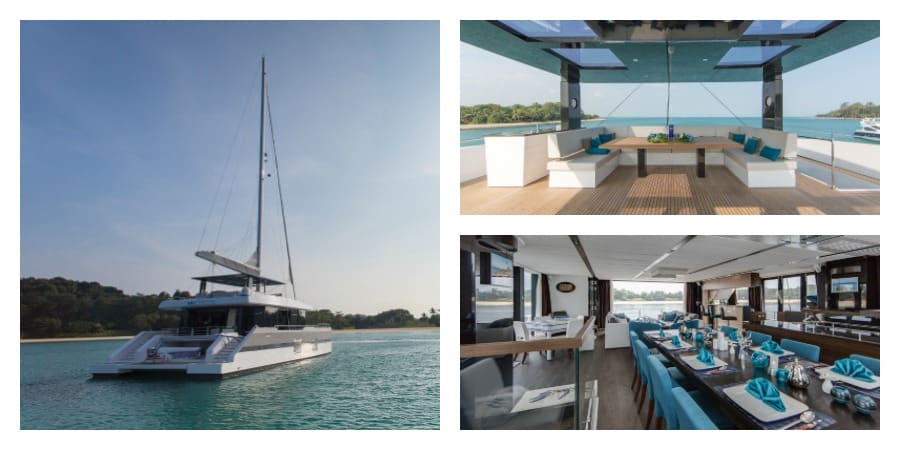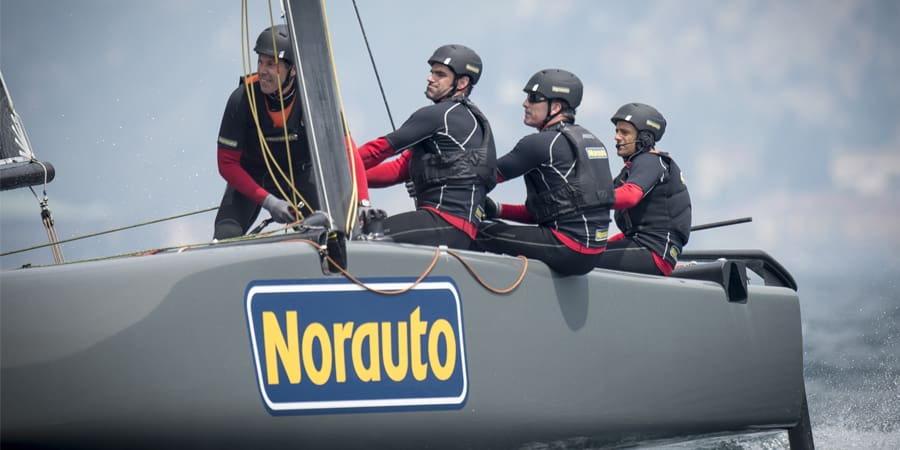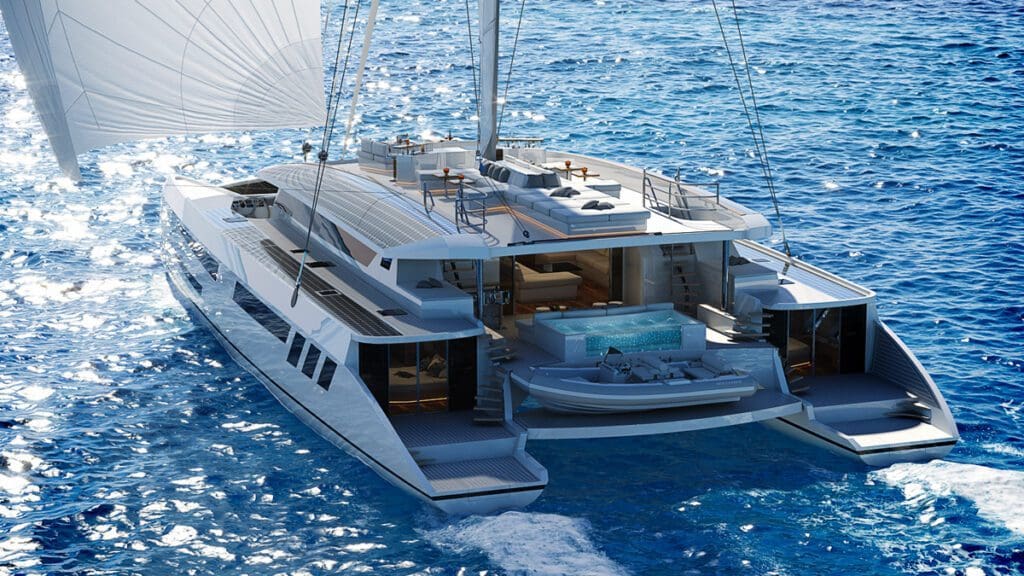
Involved in the design of innovative racing multihulls since 1980 and, since 2001, in the brokerage of luxury catamarans, yachts and motoryachts, French sailor Marc Pajot, Olympic medallist, winner of the 1982 Route du Rhum and twice semi-finalist in the America’s Cup, is presenting a radically innovative superyacht catamaran project.
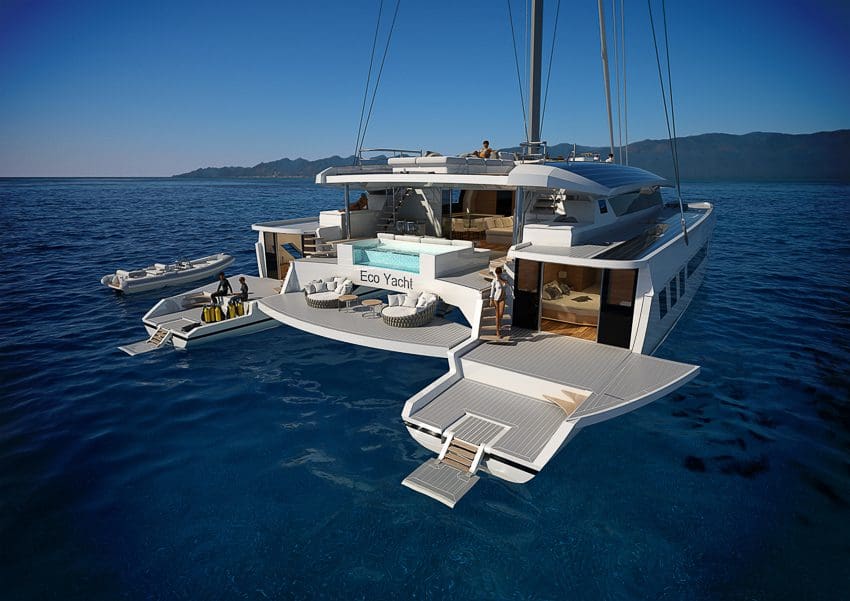
Resulting from the collaboration of a team of specialists, the Pajot Custom 110′ catamaran is a combination of new and coordinated concepts. The innovations coupled with proven solutions allow this multihull platform to achieve all the functions and attributes of a superyacht.
About the sailplan of this model presented by Marc Pajot
At the heart of the concept is the development of a high-performance sail plan to achieve high cruising speeds, while being easy and safe to handle. The square-topped mainsail of only 181 m² (1,948 sq ft) is narrow and efficient. The absence of a boom allows very simple and safe trimming, especially for gybing. It is also safe to hoist and to stow. It is simply flaked on deck, into a compartment on the flybridge, using a system of batten cars.
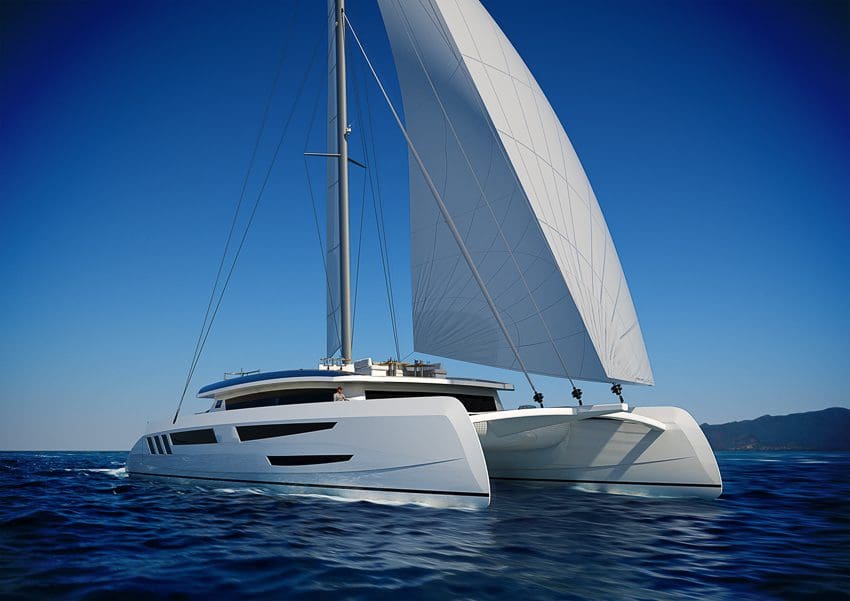
The headsails this 110′ Eco Custom catamaran presented by Marc Pajot have the benefit of a very large foretriangle for better downwind performance and to reduce the driving load as a function of the wind. A 110 m² (1,185 sq ft) jib, a 264 m² (2,824 sq ft) genoa, and a gennaker up to 790 m² (8,503 sq ft) are mounted on electric furlers and allow the best possible use of the weather conditions for maximum feel and safety.

Sail trimming and manoeuvres are carried out on captive winches with electric controls, allowing the sails to be trimmed from the helm stations or from anywhere onboard using the remote control. In order to prioritize the sensation, to keep the visibility and concentration necessary for watchkeeping, and to preserve the privacy of the guests, fore helm stations have been integrated on the side decks, grouping all the controls. An interior navigation station also takes place around the chart table.
About the materials
Aluminum for the hulls and bridge deck was selected for the flexibility it provides in manufacturing, allowing modifications and adapting the know-how of different yards. It allows weight and strength to be put where they are needed. It is also easy to maintain and repair and has excellent durability. Composite for the superstructure has been chosen for its aesthetic appearance, lightness, and insulation properties. Carbon for the rig has been chosen for its combination of rigidity and lightness.
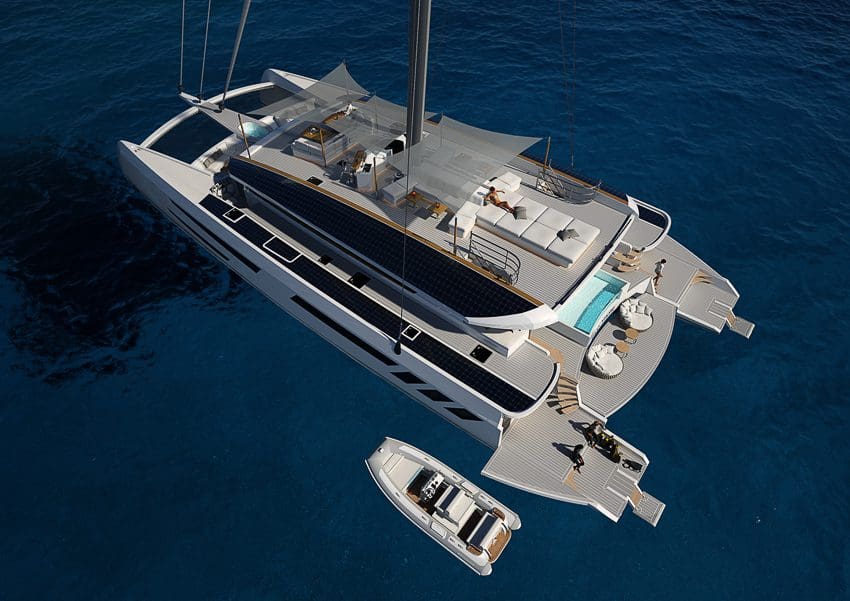
About the layouts
The use of a large proportion of the overall length of the hull, dedicated to the nacelle, has the effect of enlarging the flush-decked living space, both inside and out. The flybridge of this new 110′ catamaran unveiled by Marc Pajot is thus larger forward of the mast and provides additional usable space in the saloon and on the flybridge.
The surface area of over 100 m² (1,075 sq ft) on the flybridge makes it possible to enjoy all the living areas, bar, sunbathing and dining areas without being hindered by crew manoeuvres. The foredeck, accessible from the interior through lateral doors is also very spacious and can be equipped with a Jacuzzi.
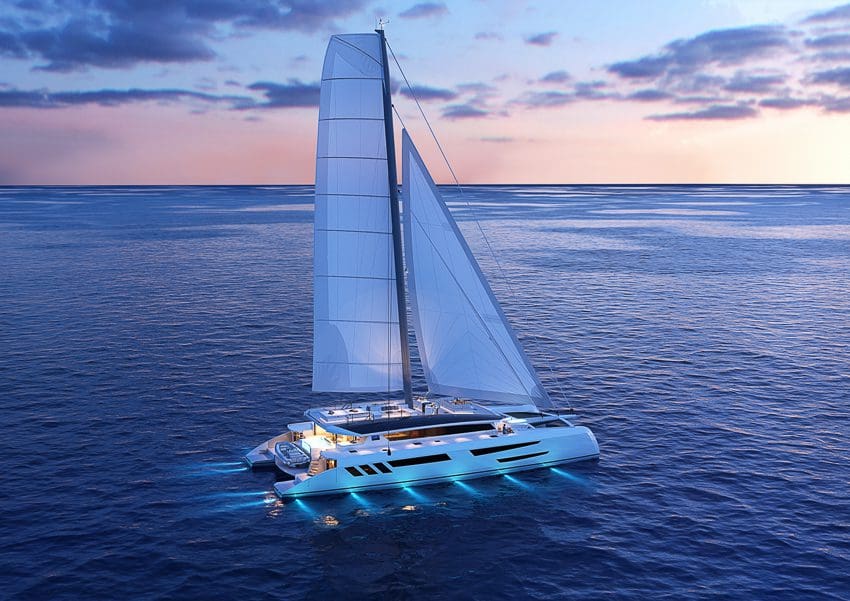
A new design has been created for the very long sugar scoops, which can be transformed into private terraces or beach club space according to your desires. Together with the hydraulic platform in its lowered position, the sugar scoop form a huge bathing platform never before seen on a catamaran of this size and which can house a Williams 625 tender. A counter-current swimming pool gives its vocation as a superyacht.
The layout and interior decor can be fully customized and modulated. The freeboard clearance (approximately 3 metres / 10 feet)) allows the VIP cabins to have flush-decked opening onto the sugar scoops, accessible through a bay window (Veritas standards).
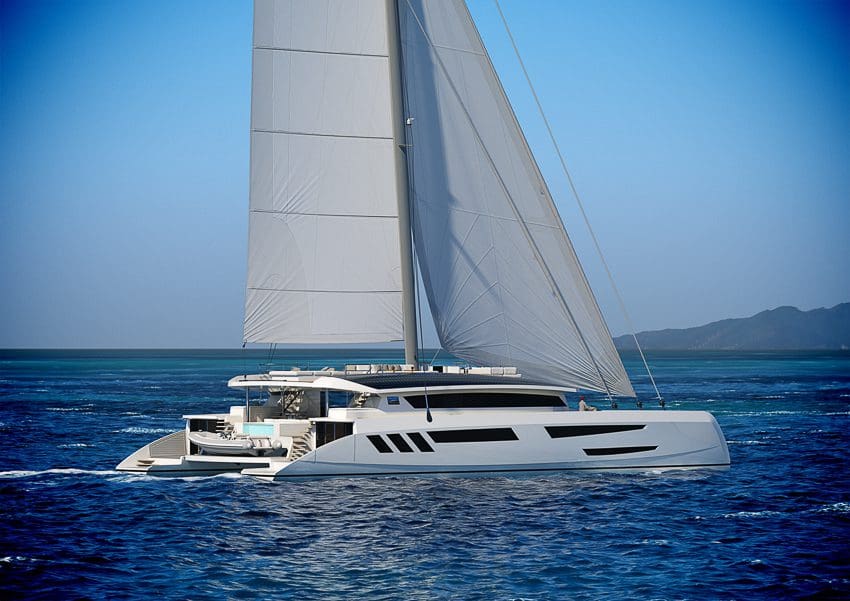
The two VIP cabins thus have their own outdoor access. The main deck area of 100 m² (1,075 sq ft) provides a large saloon, dining area bar, a separate galley, and panoramic owner’s suite. The crew quarters exploit the high headroom to provide comfortable duplex cabins and an independent crew mess with direct access to the galley and engine rooms. With these facilities, equivalent to those normally found aboard a 40-meter (130’) monohull, 8 to 12 guests and 4 to 6 crew will be comfortably accommodated.

